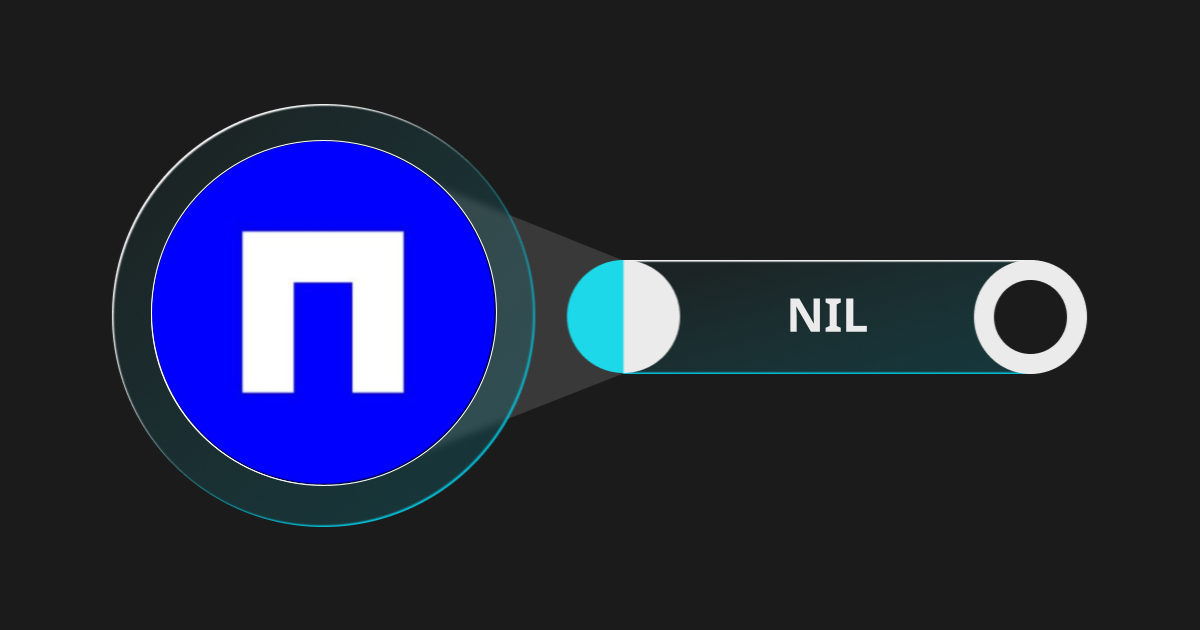Bitget: 4. miejsce w globalnym rankingu dziennego wolumenu obrotu!
Udział w rynku BTC61.50%
Nowe notowania na Bitget : Pi Network
BTC/USDT$85134.85 (+2.27%)Indeks strachu i chciwości34(Strach)
Indeks sezonu altcoinów:0(Sezon Bitcoina)
Monety notowane na rynku pre-marketPAWS,WCTCałkowity przepływ netto spot ETF-ów Bitcoina -$60.6M (1 dn.);+$218.9M (7 dn.)Pakiet prezentów powitalnych dla nowych użytkowników o wartości 6200 USDT.Odbierz teraz
Handluj w dowolnym miejscu i czasie dzięki aplikacji Bitget. Pobierz teraz
Bitget: 4. miejsce w globalnym rankingu dziennego wolumenu obrotu!
Udział w rynku BTC61.50%
Nowe notowania na Bitget : Pi Network
BTC/USDT$85134.85 (+2.27%)Indeks strachu i chciwości34(Strach)
Indeks sezonu altcoinów:0(Sezon Bitcoina)
Monety notowane na rynku pre-marketPAWS,WCTCałkowity przepływ netto spot ETF-ów Bitcoina -$60.6M (1 dn.);+$218.9M (7 dn.)Pakiet prezentów powitalnych dla nowych użytkowników o wartości 6200 USDT.Odbierz teraz
Handluj w dowolnym miejscu i czasie dzięki aplikacji Bitget. Pobierz teraz
Bitget: 4. miejsce w globalnym rankingu dziennego wolumenu obrotu!
Udział w rynku BTC61.50%
Nowe notowania na Bitget : Pi Network
BTC/USDT$85134.85 (+2.27%)Indeks strachu i chciwości34(Strach)
Indeks sezonu altcoinów:0(Sezon Bitcoina)
Monety notowane na rynku pre-marketPAWS,WCTCałkowity przepływ netto spot ETF-ów Bitcoina -$60.6M (1 dn.);+$218.9M (7 dn.)Pakiet prezentów powitalnych dla nowych użytkowników o wartości 6200 USDT.Odbierz teraz
Handluj w dowolnym miejscu i czasie dzięki aplikacji Bitget. Pobierz teraz

O monecie
Kalkulator ceny
Historia cen
Prognoza ceny
Analiza techniczna
Przewodnik po kupowaniu monet
Kategorie kryptowalut
Kalkulator zysków

Cena AIDOGEAI
Nienotowany
Waluta wyceny:
PLN
Dane pochodzą od zewnętrznych dostawców. Ta strona i podane na niej informacje nie promują żadnej konkretnej kryptowaluty. Chcesz handlować notowanymi monetami? Kliknij tutaj
zł0.{6}8324-2.33%1D
Wykres cen
Ostatnia aktualizacja: 2025-04-01 17:34:58(UTC+0)
Kapitalizacja rynkowa:--
W pełni rozwodniona kapitalizacja rynkowa:--
Wolumen (24h):--
Wolumen 24h/Kapitalizacja rynkowa:0.00%
24-godz. maks.:zł0.{6}8270
24-godz. min.:zł0.{6}8077
Najwyższa dotychczasowa wartość:zł0.{4}8823
Najniższa dotychczasowa wartość:zł0.{6}6390
Podaż w obiegu:-- AI
Całkowita podaż:
1,000,000,000,000AI
Wskaźnik obrotu:0.00%
Maks. podaż:
--AI
Cena w BTC:0.007388 BTC
Cena w ETH:0.{9}1121 ETH
Cena przy kapitalizacji rynkowej BTC:
--
Cena przy kapitalizacji rynkowej ETH:
--
Kontrakty:
0xe128...16cf3cc(Ethereum)
Jakie jest Twoje dzisiejsze nastawienie do AIDOGE?
Uwaga: te informacje mają wyłącznie charakter poglądowy.
Dzisiejsza cena AIDOGE
Aktualna dzisiejsza cena AIDOGE to zł0.{6}8324 za (AI / PLN) przy obecnej kapitalizacji rynkowej równej zł0.00 PLN. 24-godzinny wolumen obrotu wynosi zł0.00 PLN. Cena AI do PLN jest aktualizowana w czasie rzeczywistym. -2.33% dla AIDOGE w ciągu ostatnich 24 godzin. Ma podaż w obiegu wynoszącą 0 .
Jaka jest najwyższa cena AI?
AI osiągnął rekordowy poziom (ATH) na poziomie zł0.{4}8823 w dniu 2023-06-19.
Jaka jest najniższa cena AI?
AI osiągnął rekordowo niski poziom (ATL) na poziomie zł0.{6}6390 w dniu 2023-06-27.
Prognoza ceny AIDOGE
Kiedy jest dobry moment na zakup AI? Czy zalecane jest teraz kupno lub sprzedaż AI?
Podejmując decyzję o kupnie lub sprzedaży AI, należy najpierw rozważyć własną strategię handlową. Różnić się będzie także aktywność handlowa traderów długoterminowych i krótkoterminowych. Analiza techniczna AI Bitget może stanowić punkt odniesienia dla handlu.
Zgodnie z 4-godzinna analiza techniczna AI, sygnałem transakcyjnym jest Neutralna.
Zgodnie z Dzienna analiza techniczna AI, sygnałem transakcyjnym jest Sprzedaj.
Zgodnie z Tygodniowa analiza techniczna AI, sygnałem transakcyjnym jest Mocna sprzedaż.
Jaka będzie cena AI w 2026?
W oparciu o historyczny model przewidywania wyników cenowych AI, przewiduje się, że cena AI osiągnie zł0.{6}8887 w 2026 roku.
Jaka będzie cena AI w 2031?
Oczekuje się, że w 2031 cena AI zmieni się o +30.00%. Ponadto spodziewa się, że do końca 2031 cena AI osiągnie poziom zł0.{5}2359, a skumulowany ROI wyniesie +192.11%.
Historia cen AIDOGE (PLN)
Cena monety AIDOGE odnotowała -82.49% w ciągu ostatniego roku. Najwyższa cena monety wyrażona w PLN w ostatnim roku wyniosła zł0.{5}5303, a najniższa cena monety wyrażona w PLN w ostatnim roku wyniosła zł0.{6}8077.
CzasZmiana ceny (%) Najniższa cena
Najniższa cena Najwyższa cena
Najwyższa cena 
 Najniższa cena
Najniższa cena Najwyższa cena
Najwyższa cena 
24h-2.33%zł0.{6}8077zł0.{6}8270
7d-14.78%zł0.{6}8077zł0.{6}9612
30d-17.05%zł0.{6}8077zł0.{5}1126
90d-56.03%zł0.{6}8077zł0.{5}1966
1y-82.49%zł0.{6}8077zł0.{5}5303
Cały okres-99.30%zł0.{6}6390(2023-06-27, 1 lat temu )zł0.{4}8823(2023-06-19, 1 lat temu )
Informacje rynkowe AIDOGE
Historia kapitalizacji rynkowej AIDOGE
Posiadane AIDOGE według koncentracji
Wieloryby
Inwestorzy
Sprzedaż detaliczna
Adresy AIDOGE według czasu posiadania
Posiadacze
Cruisers
Traderzy
Wykres ceny coinInfo.name(12) na żywo

Oceny AIDOGE
Średnie oceny od społeczności
4.4
Ta treść została stworzona wyłącznie w celach informacyjnych.
AI do lokalnej waluty
1 AI do MXN$01 AI do GTQQ01 AI do CLP$01 AI do HNLL01 AI do UGXSh01 AI do ZARR01 AI do TNDد.ت01 AI do IQDع.د01 AI do TWDNT$01 AI do RSDдин.01 AI do DOP$01 AI do MYRRM01 AI do GEL₾01 AI do UYU$01 AI do MADد.م.01 AI do AZN₼01 AI do OMRر.ع.01 AI do KESSh01 AI do SEKkr01 AI do UAH₴0
- 1
- 2
- 3
- 4
- 5
Ostatnia aktualizacja: 2025-04-01 17:34:58(UTC+0)
Wiadomości dot. AIDOGE

ETH przekracza 1900 USDT, wzrost o 5,45% w ciągu 24 godzin
Bitget•2025-03-28 23:06

BTC spada poniżej 84 000 USDT
Bitget•2025-03-28 15:06

Notowanie Banana For Scale (BANANAS31) w Strefie Innowacji i Strefie Meme na Bitget!
Bitget Announcement•2025-03-26 12:00

Nillion (NIL): Przyszłość bezpiecznego i prywatnego przetwarzania danych
Bitget Academy•2025-03-25 11:58

Platforma ekonomiczna AI na łańcuchu Solana, PioneerAI, wkrótce zostanie uruchomiona
Bitget•2025-03-21 12:42
Kup więcej
Często zadawane pytania
Jaka jest obecna cena AIDOGE?
Bieżąca cena monety AIDOGE wynosi zł0 za (AI/PLN), przy czym bieżąca kapitalizacja rynkowa wynosi zł0 PLN. Wartość monety AIDOGE podlega częstym wahaniom, ponieważ rynek kryptowalut jest aktywny przez całą dobę. Bieżąca cena monety AIDOGE w czasie rzeczywistym i jej dane historyczne są dostępne na Bitget.
Czym jest 24-godzinny wolumen obrotu AIDOGE?
W ciągu ostatnich 24 godzin wolumen obrotu AIDOGE wyniósł zł0.00.
Jaka jest najwyższa dotychczasowa wartość AIDOGE?
Najwyższa dotychczasowy cena AIDOGE to zł0.{4}8823. Ta najwyższa dotychczasowa cena jest najwyższą ceną dla AIDOGE od czasu jego wprowadzenia.
Czy mogę kupić AIDOGE na Bitget?
Tak, AIDOGE jest obecnie dostępne na scentralizowanej giełdzie Bitget. Aby uzyskać bardziej szczegółowe instrukcje, zapoznaj się z naszym pomocnym przewodnikiem Jak kupić .
Czy mogę uzyskać stały dochód z inwestycji w AIDOGE?
Oczywiście Bitget zapewnia platforma do handlu strategicznego, z inteligentnymi botami handlowymi do automatyzacji transakcji i osiągania zysków.
Gdzie mogę kupić AIDOGE z najniższą opłatą?
Z przyjemnością informujemy, że platforma do handlu strategicznego jest już dostępny na giełdzie Bitget. Bitget oferuje wiodące w branży opłaty transakcyjne i głębokość, aby zapewnić inwestorom zyskowne inwestycje.
Gdzie mogę kupić kryptowaluty?
Sekcja wideo — szybka weryfikacja, szybki handel

Jak ukończyć weryfikację tożsamości na Bitget i zabezpieczyć się przed oszustwami?
1. Zaloguj się na swoje konto Bitget.
2. Jeśli jesteś nowym użytkownikiem Bitget, obejrzyj nasz przewodnik poświęcony tworzeniu konta.
3. Najedź kursorem na ikonę swojego profilu, kliknij opcję „Nie zweryfikowano” i wybierz „Zweryfikuj”.
4. Wybierz kraj lub region wydający dokument tożsamości oraz jego rodzaj, a następnie postępuj zgodnie z instrukcjami.
5. Wybierz opcję „Weryfikacja mobilna” lub „PC” w zależności od preferencji.
6. Podaj swoje dane, prześlij kopię dokumentu tożsamości i zrób selfie.
7. Prześlij swoje zgłoszenie i gotowe — weryfikacja tożsamości zakończona.
Inwestycje w kryptowaluty, w tym kupowanie AIDOGE online za pośrednictwem Bitget, podlegają ryzyku rynkowemu. Bitget zapewnia łatwe i wygodne sposoby kupowania AIDOGE. Dokładamy wszelkich starań, aby w pełni informować naszych użytkowników o każdej kryptowalucie, którą oferujemy na giełdzie. Nie ponosimy jednak odpowiedzialności za skutki, które mogą wyniknąć z kupna AIDOGE. Ta strona i wszelkie zawarte w niej informacje nie stanowią poparcia dla żadnej konkretnej kryptowaluty.
Bitget Insights

Crypto_inside
8godz.
Day trading ❌ Swing trading. 🧐😵💫
Day trading and swing trading are two popular trading strategies used in financial markets. While both strategies aim to profit from market fluctuations, they differ in their approach, time frame, and risk management.
Day Trading:
1. Intra-day trading: Day traders buy and sell securities within a single trading day.
2. Closing positions before market close: Day traders close all positions before the market closes to avoid overnight risks.
3. Frequent trading: Day traders make multiple trades throughout the day.
4. Technical analysis: Day traders rely heavily on technical analysis, using charts and indicators to identify trading opportunities.
5. Risk management: Day traders use stop-loss orders and position sizing to manage risk.
Swing Trading:
1. Short-term trading: Swing traders hold positions for a shorter period than investors, typically from a few days to a few weeks.
2. Holding positions overnight: Swing traders may hold positions overnight, exposing themselves to overnight risks.
3. Less frequent trading: Swing traders make fewer trades than day traders, as they hold positions for longer periods.
4. Combination of technical and fundamental analysis: Swing traders use a combination of technical and fundamental analysis to identify trading opportunities.
5. Risk management: Swing traders use stop-loss orders, position sizing, and risk-reward ratios to manage risk.
Key Differences:
1. Time frame: Day traders hold positions for minutes or hours, while swing traders hold positions for days or weeks.
2. Trading frequency: Day traders make multiple trades throughout the day, while swing traders make fewer trades.
3. Risk management: Day traders focus on managing risk through quick trade execution and tight stop-loss orders, while swing traders use a combination of risk management strategies.
4. Analysis: Day traders rely heavily on technical analysis, while swing traders use a combination of technical and fundamental analysis.
Choosing Between Day Trading and Swing Trading:
1. Trading style: Day trading suits traders who can dedicate several hours a day to monitoring markets and making trades. Swing trading suits traders who prefer to hold positions for longer periods.
2. Risk tolerance: Day trading involves higher risk due to the fast-paced nature of the markets. Swing trading involves lower risk, as positions are held for longer periods.
3. Market analysis: Day traders rely on technical analysis, while swing traders use a combination of technical and fundamental analysis.
4. Time commitment: Day trading requires a significant time commitment, while swing trading requires less time.
Thank you...🙂
$BTC $ETH $SOL $PI $AI $XRP $DOGE $SHIB $BONK $COQ $CATS $BGB $BNB $U2U $WUF $WHY $SUNDOG $PARTI $CEC $BLUR
SUNDOG+1.87%
BTC+3.14%

Crypto_inside
8godz.
What is 'Position trading'..🤔🤔??
Position trading is a long-term trading strategy that involves holding a position in a security for an extended period, typically weeks, months, or even years. This approach focuses on capturing significant price movements and trends, rather than trying to time the market or make quick profits.
Key Characteristics:
1. Long-term focus: Position traders hold positions for an extended period, riding out market fluctuations.
2. Trend following: Position traders aim to identify and follow long-term trends in the market.
3. Fundamental analysis: Position traders often rely on fundamental analysis, examining a company's financials, management, and industry trends.
4. Risk management: Position traders must manage risk carefully, as large price movements can result in significant losses.
Position Trading Strategies:
1. Trend identification: Position traders use technical indicators and chart patterns to identify long-term trends.
2. Breakout trading: Position traders buy or sell when a security breaks out of a established trading range.
3. Mean reversion: Position traders bet on prices reverting to their historical means.
Advantages:
1. Reduced transaction costs: Position traders incur lower transaction costs due to fewer trades.
2. Less emotional stress: Position traders are less affected by short-term market volatility.
3. *Potential for significant gains*: Position traders can capture significant price movements and trends.
Disadvantages:
1. Market risk: Position traders are exposed to market risk, as large price movements can result in significant losses.
2. Opportunity cost: Position traders may miss out on other investment opportunities while holding a long-term position.
3. Requires patience and discipline: Position traders must be patient and disciplined, as it can take time for a trade to develop.
Position Trading vs. Day Trading:
1. Trade duration: Position traders hold positions for weeks, months, or years, while day traders close their positions within a single trading day.
2. Trade frequency: Position traders make fewer trades, while day traders make multiple trades throughout the day.
3. Risk management: Position traders focus on managing risk through position sizing and stop-loss orders, while day traders focus on managing risk through quick trade execution and tight stop-loss orders.
Position trading requires a unique combination of fundamental analysis, technical analysis, and risk management. While it can be a profitable strategy, it's essential to carefully consider the risks and challenges involved.
Thank you...🙂
$BTC $ETH $SOL $PI $AI $XRP $BGB $BNB $DOGE $SHIB $BONK $FLOKI $U2U $WUF $ORDER $SUNDOG $TRX $WHY
SUNDOG+1.87%
BTC+3.14%

Crypto_inside
9godz.
What is Scalping...🤔🤔??
Scalping is a trading strategy that involves making multiple small trades in a short period, typically seconds or minutes, to take advantage of small price movements. The goal of scalping is to accumulate small profits from each trade, which can add up to significant gains over time.
Key Characteristics:
1. Short-term focus: Scalping involves holding trades for a very short period.
2. High-frequency trading: Scalpers make multiple trades in rapid succession.
3. Small profit targets: Scalpers aim to make small profits from each trade.
4. Risk management: Scalpers must manage risk carefully to avoid significant losses.
Scalping Strategies:
1. Trend following: Scalpers follow the trend, making trades in the direction of the market momentum.
2. Range trading: Scalpers buy and sell within a specific price range, taking advantage of oscillations.
3. Mean reversion: Scalpers bet on prices reverting to their historical means.
Tools and Techniques:
1. Technical analysis: Scalpers use technical indicators, such as moving averages and RSI, to identify trading opportunities.
2. Chart patterns: Scalpers recognize chart patterns, such as triangles and wedges, to anticipate price movements.
3. Order flow analysis: Scalpers analyze order flow to gauge market sentiment and identify potential trading opportunities.
Risks and Challenges:
1. Market volatility: Scalping involves trading in volatile markets, which can result in significant losses.
2. Commissions and fees: Scalpers incur high transaction costs due to frequent trading.
3. Emotional stress: Scalping can be emotionally demanding, requiring intense focus and quick decision-making.
Scalping vs. Day Trading:
1. Trade duration: Scalping involves holding trades for seconds or minutes, while day trading involves holding trades for hours or until the market closes.
2. Trade frequency: Scalpers make multiple trades in rapid succession, while day traders typically make fewer trades.
Scalping requires a unique combination of technical analysis, risk management, and mental discipline. While it can be a profitable strategy, it's essential to carefully consider the risks and challenges involved.
Thank you...🙂
$BTC $ETH $SOL $PI $AI $XRP $DOGE $SHIB $BONK $COQ $U2U $WUF $ADA $WHY $SUNDOG $PARTI $CATS
SUNDOG+1.87%
BTC+3.14%

Crypto_inside
10godz.
What is IQ..🤔🤔??
Intelligence Quotient (IQ) is a score derived from standardized tests designed to measure human intelligence. IQ tests assess various cognitive abilities, such as:
Components of IQ Tests:
1. Verbal Comprehension: Measures ability to understand and use language.
2. Perceptual Reasoning: Assesses ability to reason, form concepts, and solve problems.
3. Working Memory: Evaluates ability to hold and manipulate information in short-term memory.
4. Processing Speed: Measures ability to quickly and accurately process visual information.
IQ Score Interpretation:
1. Average IQ: 85-115 (68% of population)
2. Above Average IQ: 116-130 (16% of population)
3. Gifted IQ: 131-145 (2% of population)
4. Highly Gifted IQ: 146-160 (0.1% of population)
5. Profoundly Gifted IQ: 161-175 (0.01% of population)
Criticisms and Limitations of IQ Tests:
1. Cultural Bias: IQ tests may favor certain cultural or socioeconomic groups.
2. Narrow Scope: IQ tests only measure specific aspects of intelligence.
3. Context-Dependent: IQ scores can be influenced by environmental factors.
4. Oversimplification: IQ scores can oversimplify complex cognitive abilities.
Types of Intelligence:
1. Fluid Intelligence: Ability to reason, think abstractly, and solve problems.
2. Crystallized Intelligence: Ability to use learned knowledge and experience.
3. Emotional Intelligence: Ability to recognize and understand emotions.
Notable Theories and Models:
1. Gardner's Multiple Intelligences: Proposes multiple types of intelligence, such as linguistic, spatial, and bodily-kinesthetic.
2. Sternberg's Triarchic Theory: Suggests three components of intelligence: analytical, creative, and practical.
IQ tests provide a limited snapshot of cognitive abilities and should not be considered the sole measure of intelligence or potential.
Thank you...🙂
$BTC $ETH $SOL $PI $AI $XRP $BGB $BNB $ONDO $DOGE $SHIB $BONK $FLOKI $U2U $WUF $PARTI $WHY $SUNDOG
SUNDOG+1.87%
BTC+3.14%

Crypto_inside
11godz.
Machine learning ❌ Traditional learning. 🧐😵💫
Machine learning and traditional learning are two distinct approaches to learning and problem-solving.
Traditional Learning:
1. Rule-based: Traditional learning involves explicit programming and rule-based systems.
2. Human expertise: Traditional learning relies on human expertise and manual feature engineering.
3. Fixed models: Traditional learning uses fixed models that are not updated automatically.
Machine Learning:
1. Data-driven: Machine learning involves learning from data and improving over time.
2. Algorithmic: Machine learning relies on algorithms that can learn from data and make predictions.
3. Adaptive models: Machine learning uses adaptive models that can update automatically based on new data.
Key Differences:
1. Learning style: Traditional learning is rule-based, while machine learning is data-driven.
2. Scalability: Machine learning can handle large datasets and complex problems, while traditional learning is limited by human expertise.
3. Accuracy: Machine learning can achieve higher accuracy than traditional learning, especially in complex domains.
Advantages of Machine Learning:
1. Improved accuracy: Machine learning can achieve higher accuracy than traditional learning.
2. Increased efficiency: Machine learning can automate many tasks, freeing up human experts for more complex tasks.
3. Scalability: Machine learning can handle large datasets and complex problems.
Disadvantages of Machine Learning:
1. Data quality: Machine learning requires high-quality data to learn effectively.
2. Interpretability: Machine learning models can be difficult to interpret and understand.
3. Bias: Machine learning models can perpetuate biases present in the training data.
When to Use Machine Learning:
1. Complex problems: Machine learning is well-suited for complex problems that require pattern recognition and prediction.
2. Large datasets: Machine learning can handle large datasets and identify trends and patterns.
3. Automating tasks: Machine learning can automate many tasks, freeing up human experts for more complex tasks.
When to Use Traditional Learning:
1. Simple problems: Traditional learning is well-suited for simple problems that require explicit programming and rule-based systems.
2. Small datasets: Traditional learning is suitable for small datasets where machine learning may not be effective.
3. Human expertise: Traditional learning relies on human expertise and manual feature engineering, making it suitable for domains where human expertise is essential.
Thank you...🙂
$BTC $ETH $SOL $PI $AI $XAI $BGB $BNB $DOGE $DOGS $SHIB $BONK $MEME $XRP $ADA $U2U $WUF $PARTI $WHY
BTC+3.14%
BGB+2.04%
Powiązane aktywa
Popularne kryptowaluty
Wybór 8 najlepszych kryptowalut według kapitalizacji rynkowej.
Ostatnio dodane
Ostatnio dodane kryptowaluty.
Porównywalna kapitalizacja rynkowa
Spośród wszystkich aktywów Bitget, te 8 pod względem kapitalizacji rynkowej najmniej dzieli od: AIDOGE


































